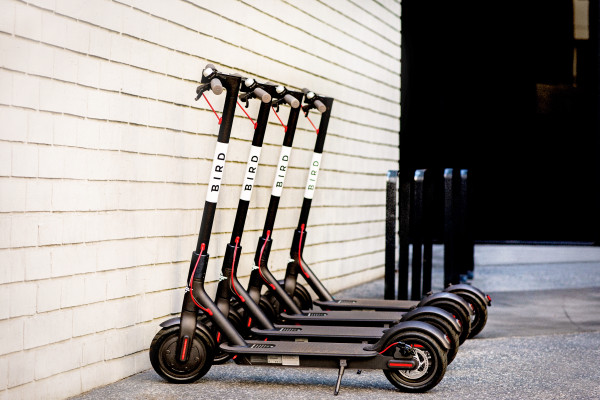
How can an electric scooter ride-sharing company like Bird possibly make money?
If you live in a select number of cities in the U.S., it’s hard not to see electric scooters appearing on sidewalks all over the place. Electric scooter ride-sharing services are also remarkably cheap: $1 to start a ride and another $0.15 per minute after that. But electric scooters aren’t cheap, and the logistics of a shared network are off-the-charts complicated.
As someone working in venture capital for hardware startups, the above question is obviously rather prescient.
How does a company like this possibly make money?
Here’s a closer look at the basic unit economics of Bird, the electric scooter ride-sharing company based in Santa Monica, Calif. There’ll be a super simple model and test scenarios that show how critical it is to understand and manipulate the key levers of any startup — in fact, it can determine whether a business sinks or swims.
Building a Scooter
Two young people in love, gazing adoringly at a pair of electric kick-scooters. Because that’s totally a normal thing to be doing.
It looks like Bird is using the Mi Electric Scooter as the base of their platform. The Mi’s recommended retail price is $499, but it’s probably fair to assume that Bird gets a bulk discount and can buy the scooters at around $300 apiece.
On top of the base cost of the scooters, Bird needs modules to turn the scooters into sharing economy units. That doesn’t have to cost a lot of money. A Particle 3G asset tracker in a box, plus some custom code to deal with the scooter’s power management, is all that’s needed, so let’s call that $80 per unit. That takes the total cost per finished scooter to $380; plus, we’ll toss in $20 for final assembly.
My back-of-the-envelope calculation puts Bird’s road-ready scooter at $400 per unit.
Deploying a scooter
Scooter startup Scoot operates electric scooters that are more like motorcycles than electrified Razer kick-scooters.
One of the biggest problems electric scooter companies must solve is distributed charging. Scoot solved this problem by building a massive network of charging stations, distributed around San Francisco — a big infrastructure push, but necessary, given the robust profile of the scooters. Unlike Scoot’s wheels, which need to be returned to a charging station for charging, Bird scooters can be easily picked up and taken inside a user’s apartment or office, creating an instant and nearly infinite distributed charging network called “available wall sockets.”
This completely changes the charging game in Bird’s favor, so much so that Bird offers people $5 per charged scooter. This creates an elegant user experience and is a sign that it’s a key lever in their financial model.
A tale of two financial models
A lot of assumptions go into building a financial model. This one came together over a few beers on the weekend and is an example of the kind of “quick and dirty” math all founders should do as they pressure test ideas. You can follow along in this spreadsheet, and if you want to experiment with the numbers, you can duplicate the sheet and plug in your own numbers.
For both models, we’ll assume the following:
We’ll be playing with the average lifetime of a scooter, the average number of rides customers take per day, and some metrics around charging, to see how that effects gross margin.
Model 1: Uh-oh, this looks like trouble.
For the first model, let’s look at these dynamics:
- Average lifetime rides per scooter — 300
- Average rides per scooter per day — 5
- Average ride length — 20 minutes
- Percent of consumer charges: 50%
If those assumptions are right, it takes 220 rides (or 44 days) to reach break-even on the scooter itself.
After 400 rides (when a scooter is written off), the company has generated $147 of profit, at a relatively meagre 10.3% profit margin.
Suffice to say: That doesn’t look like a particularly sustainable business.
Model 2: A more optimistic outlook
However, you don’t have to change the assumptions much for it to be a much more attractive business.
What if Bird was able to extend the life of a given scooter, decrease the average ride length but increase the average rides per day, and push more of the charging burden to consumers?
Let’s look at these dynamics:
- Average lifetime rides per scooter — 500
- Average rides per scooter per day — 7
- Average ride length — 20 minutes
- Percent of customer charges — 75%
A very different story. Note here that Bird did not reduce the hard costs of charging a scooter (it’s still $5 for a consumer to charge and $20 for Bird to charge), but they did find a way to encourage customers to charge for them, reducing the overall charging cost.
Changing these four variables means that it only takes 165 rides (24 days) to break even, and the lifetime profit of a scooter is $813 — or a gross margin of 41%.


